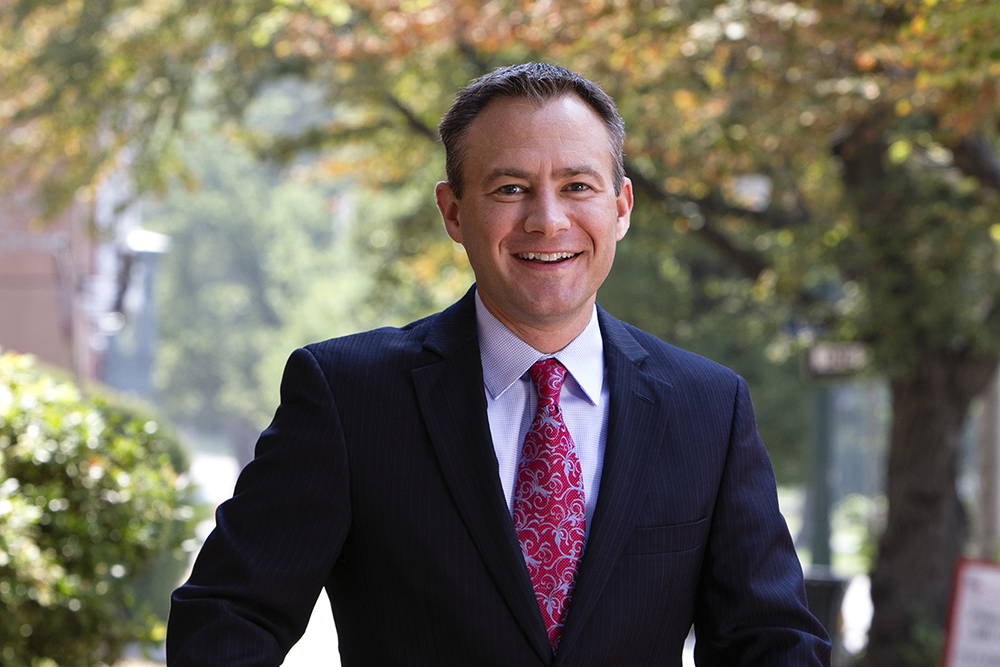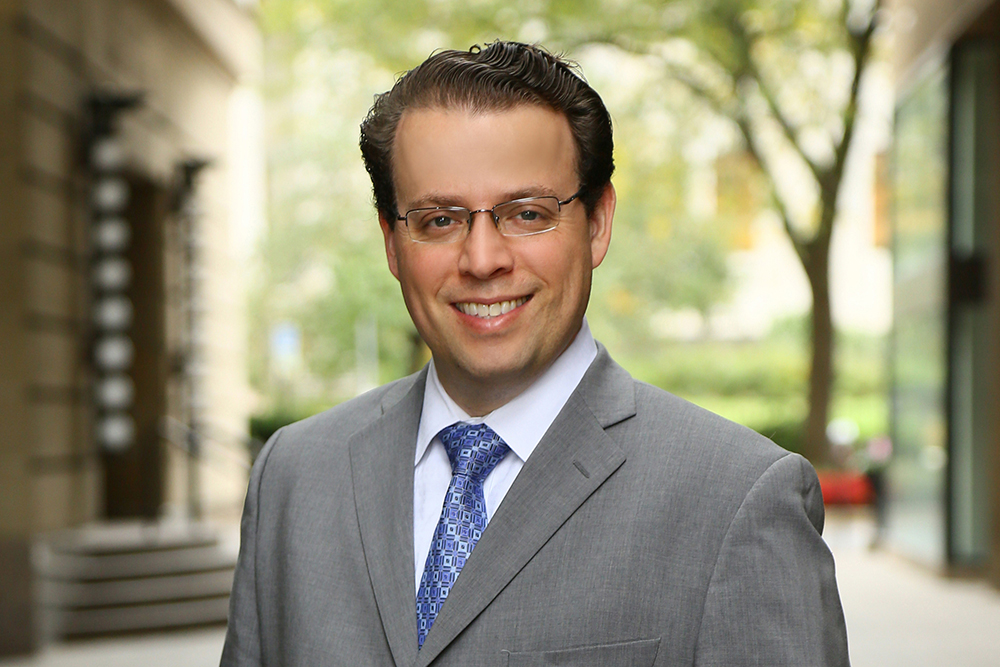McNees 2018 in Review – Trademarks, Copyrights and Patents
January 11, 2019
Publications
From big name brawls, to new legislation, to the year of inter partes review, 2018 was a hallmark year for intellectual property law. With so many interesting and informative updates, 2018 has set the bar high for 2019. Let’s take a look back at some of our favorite trademark, copyright, and patent law developments from 2018.
Trademark Law
New Battle for Old Taylor
In June, the Sixth Circuit rendered a significant decision on the issue of trademark fair use. Bourbon fans will enjoy the introduction to this case and its historic underpinnings, which involve Colonel Edmund Haynes Taylor, Jr. and the historic post-Civil War distillery he founded in Kentucky, which came to be known as “the Former Old Taylor Distillery” or “Old Taylor.” While once a magnificent example of its kind, the Colonel’s distillery had fallen into disrepair. Defendants purchased the property in 2014, and began to renovate it with the intent of eventually resuming bourbon production there under the brand CASTLE & KEY. However, the defendants did not entirely strip the historic references from the facility or their marketing efforts. Defendants kept a 400-foot “Old Taylor Distillery” sign on the distillery’s barrel storage warehouse and a 20-foot “The Old Taylor Distillery Company” sign above the entrance to its main building, and referred to the facility, including on social media, as “the Former Old Taylor Distillery” or “Old Taylor.”
Enter Sazerac, who owns the trademark rights to OLD TAYLOR and COLONEL E. H. TAYLOR and produces bourbon under both names. Sazerac claimed that defendants’ use of “Old Taylor” was likely to cause consumer confusion and, therefore, infringed. In dismissing Sazerac’s claims, the court found that defendants’ use was exclusively as a descriptive geographic identifier and was not in bad faith, thereby satisfying the elements of fair use. Defendants used “Taylor” to pinpoint the historic location where defendants planned to make a new bourbon, not to brand that bourbon. Further, defendants demonstrated extensive efforts to identify CASTLE & KEY as its brand (with no intent to use “Taylor” on their products), the property was on the National Register of Historic Places, and the aforementioned signage was on the property prior to purchase. While fair use cases are highly fact intensive, the defendants in this case made the right moves to avoid infringing Sazerac’s marks.
Zero Fight Left in ZERO Trademark
Also in June, the Federal Circuit picked apart the Trademark Trial and Appeal Board’s (TTAB) handling of Coca-Cola’s ZERO trademark. Royal Crown has, for over a decade, attempted to prevent Coca-Cola from registering marks that afford it any protection for the term ZERO when applied to various beverages, notably soft drinks. Coca-Cola has argued that the term ZERO is descriptive and that the term has acquired distinctiveness when applied to Coca-Cola’s products through its extensive use and promotion. Royal Crown argues the term is generic and incapable of acquiring distinctiveness as a source identifier for any particular manufacturer’s “soft drinks, sports drinks and energy drinks.”
The TTAB found Coca-Cola’s use of ZERO descriptive because the term ZERO is not a generic term for those products. The Federal Circuit vacated and remanded the case to the TTAB after determining that the TTAB’s evaluation of descriptiveness versus genericness failed to consider if the term is generic when applied to a specific genus of “soft drinks, sports drinks, and energy drinks.” The evaluation of genericness must consider if the term identifies a key aspect or subcategory of the claimed goods and the consumer’s understanding of the term applied to that aspect or subcategory. The TTAB must now dive deeper into the soft drinks, sports drinks, and energy drinks categories. In addition, and based on the degree of descriptiveness found—if any—the TTAB must reconsider the evidence of acquired distinctiveness provided by Coca-Cola and determine if it is enough to support a determination that ZERO has acquired distinctiveness. Whatever the outcome, Coca-Cola has already moved on with its ZERO branding, now referring to its products as “zero sugar.” Expect the TTAB to consider the issue of acquired distinctiveness more carefully in the future and to look not only at the goods as claimed on a trademark application, but also the specific features or sub-classes of those goods.
Stepping Into Secondary Meaning
In October, the Federal Circuit decided an important trade dress case involving Converse All Star shoes. In a complaint filed with the International Trade Commission (ITC), Converse claimed that infringers imported copycat All Star shoes bearing the recognizable Converse stripes, toe caps, and diamond pattern borders. Converse only obtained a federal trademark registration for this trade dress in September 2013, even though Converse first used the trade dress decades ago and infringers allegedly imported infringing shoes prior to September 2013.
The ITC found that the All Star trade dress registration was invalid and had not acquired secondary meaning, despite the presumption of secondary meaning afforded trade dress registrations. To show that trade dress is distinctive, a trademark owner must show that the trade dress has acquired distinctiveness—in other words, the trade dress must have secondary meaning such that the public associates the trade dress features with a particular source. With respect to infringement occurring after Converse’s trade dress registered, the Federal Circuit held that the ITC applied the incorrect standard to determine whether Converse’s trade dress registration was valid. For post-registration claims of infringement, the Federal Circuit outlined the proper test the ITC should use to determine whether the registered trade dress was valid, i.e., whether the trade dress had secondary meaning.
With respect to infringement occurring before Converse’s trade dress registered, the Federal Circuit held that Converse would have to show the trade dress had acquired secondary meaning prior to each and every infringement that occurred before September 2013. In other words, Converse could not point to its trade dress registration to establish a presumption of secondary meaning for cases of infringement occurring prior to the date the trade dress was registered.
Oh . . . Who Lives in a Trademarked Restaurant Under the Sea?
In May, the Fifth Circuit issued a significant decision finding that trademark rights can be developed in a fictional element in a television show or movie that are strong enough to prevent an unrelated party from using that trademark in real life. Viacom had objected to the registration and use of the trademark THE KRUSTY KRAB by defendant in connection with a seafood restaurant, arguing that such use infringed its unregistered common law trademark rights and created consumer confusion with the fictional hamburger restaurant named THE KRUSTY KRAB in its SpongeBob SquarePants television series. After the defendant refused to (1) withdraw a pending trademark application and (2) stop using THE KRUSTY KRAB, Viacom sued.
In upholding the lower court’s decision granting summary judgment in favor of Viacom, the Fifth Circuit held that specific elements within a television show can receive trademark protection. The court noted that when an element plays a more central role in a franchise, trademark protection is granted, citing with approval other cases that held the DAILY PLANET and KRYPTONITE of Superman and the GENERAL LEE from The Dukes of Hazzard are entitled to trademark protection. In this case, the Fifth Circuit noted that THE KRUSTY KRAB was a central element in SpongeBob SquarePants, having appeared in most episodes, and was licensed by Viacom for use in connection with a wide variety of goods. The court found it conceivable that Viacom could license THE KRUSTY KRAB for restaurants. The Fifth Circuit agreed with Viacom and the district court that defendant’s proposed use would infringe Viacom’s trademark rights. Absorbent and yellow and victorious was he!
Honey Badger Creator Does Care
In November, the Ninth Circuit held in a panel decision that Christopher Gordon, the creator of a series of very popular narrated honey badger videos on YouTube, may be able to stop the use of several phrases associated with the videos on greeting cards. Gordon sued the defendants for selling greeting cards featuring several catch phrases like “Honey Badger Don’t Care” and “Honey Badger Don’t Give a S—.” In reversing a summary judgment decision by the district court in favor of the defendants, the Ninth Circuit panel provided guidance on when an expressive work such as a song, photograph, video game, television show or greeting card may infringe upon trademark rights and when the First Amendment protects such use.
The panel held that trademark rights cannot be enforced against expressive works unless the public interest in avoiding consumer confusion outweighs the public interest in free expression. Normally this means that for there to be trademark infringement the use of the mark (1) has no artistic relevance to the underlying work whatsoever or (2) explicitly misleads consumers as to the source or the content of the work. The decision noted that while the catch phrases were relevant to the cards because they constituted the punchline of the cards, a question remained as to whether the use of the catch phrases was misleading. The panel noted that a key consideration relevant to deciding this factor is whether the defendant had added its own expressive content to the work beyond the trademark itself or primarily copied the plaintiff’s mark. The panel noted that using the mark as the centerpiece of the work, without an additional contribution such as social commentary, may reflect nothing more than an effort to create confusion to induce sales and reversed the district court decision. This case shows the distinction between protected free speech and trademark infringement, with the former requiring the addition of original creative expression rather than mere reuse of the plaintiff’s trademark.
What to Expect in 2019
In Mission Products v. Tempnology, the Supreme Court will resolve a Circuit Split over what happens to a trademark license when the licensor declares bankruptcy. Under bankruptcy law, a debtor has the option to “reject” certain contracts to alleviate itself of financial obligations. The Bankruptcy Code has carved out certain contracts from this general rule, including contracts involving trade secrets, patents, and copyrights. Deliberately omitted from the list of carveouts are trademarks, which has led to a Circuit Split in how to deal with a trademark license that has been rejected by the bankrupt licensor. We expect the Supreme Court to provide more clarity on the licensee’s use of a trademark and the licensor’s obligations under a licensing agreement upon bankruptcy.
In more scandalous news, the Supreme Court recently decided to hear Iancu v. Brunetti, a trademark case involving a constitutional challenge to the Lanham Act’s ban on scandalous and immoral trademarks. In December of 2017, in light of the Supreme Court’s ruling that the Lanham Act’s ban on disparaging marks violated the First Amendment in Matal v. Tam, the Federal Circuit ruled the ban on scandalous and immoral trademarks unconstitutional, reversing the USPTO’s decision to refuse registration for the trademark FUCT.
Copyright Law
Thousands of Works Go Public
On January 1, 2019, something happened that has not happened in over 20 years. Thousands of copyrighted works entered the public domain and are now available for duplication and publication by the public. While copyrights in the United States originally lasted for 14 or 28 years under the 1909 Copyright Act, Congress extended the life of copyrights on several occasions. In 1998 Congress passed the Sonny Bono Copyright Extension Act that extended the life of works published from 1923 to 1978 from 75 to 95 years. Also known as the Mickey Mouse Protection Act, this Act protected Steamboat Willie, the first Mickey Mouse movie, from passing into the public domain. However, Congress did not extend the life of these works again, permitting works published in 1923 to begin entering the public domain this year after the expiration of their 95-year term. As copyright law has many nuances, it is not completely clear which works will enter the public domain. Some had lapsed previously due to author inaction (renewals were required), and others may have longer lives due to initial foreign publication or because the works were not published when the works were created. It is believed that works such as Kahlil Gibran’s The Prophet and Sigmund Freud’s The Ego and the Id likely have entered the public domain, with works such as F. Scott Fitzgerald’s The Great Gatsby entering in 2021.
Based on the complexities of U.S. copyright law, which works continue to be subject to copyright protection and which works enter the public domain will continue to be difficult to assess. For works published after 1978, copyrights continue for 120 years for works not authored or created by a human (such as works made for hire), or for the life of the author plus 70 years for works authored by humans.
We can expect to begin seeing works published on or after January 1, 1923 being reproduced as e-books, as well as derivative works such as movies and screenplays based on these books, without the author or their family controlling these publications or securing royalties.
Nike Says: “Just Copy It.”
What image comes to mind when you hear “Nike” and “Michael Jordan”? Probably this:
Since its introduction in 1987, Nike has made billions of dollars in sales of products featuring this now iconic logo. Nearly 30 years later, this logo would become the subject of a hotly contested copyright infringement case brought by the photographer who took the original photograph.
In 1984, while Jordan was still a student at UNC, Jacob Rentsmeester conceived the idea to shoot a photograph with Jordan in full flight, legs extended and ball in his left hand as if ready to dunk. Rentsmeester received copyright protection and the original photo was published in Life. Nike paid Rentsmeester $150 for a limited license to use transparencies of the photograph “for slide presentation only.” Nike then hired its own photographer to produce its own photograph, again showing a leaping Jordan with his left hand extended as if he is about to dunk the ball. After negotiating a new deal with Rentsmeester to use the image for a period of two years, Nike used its own photo on billboards. Nike registered the silhouette as a trademark in 1987.
In 2015, Rentsmeester sued Nike for copyright infringement, claiming that Nike copied the image on the left (below) to produce the image on the right (below).
The District Court in Oregon disagreed, holding that Nike did not copy enough of the “protected expression” of the original photograph to find substantial similarity between the works. In reaching its decision, the Court emphasized the distinction between “copying” and “unlawful appropriation.” Although the original pose was a product of Rentsmeester’s intellectual invention, he could not copyright the pose itself. Instead, he was entitled to protection only for the way the pose is expressed in the photograph: the camera angle, timing, shutter speed, etc. In comparing the two photographs, the Court held that Nike’s photograph does not feature the same selection and arrangements of the protected elements of Rentsmeester’s work. This case is a good illustration of a fundamental copyright principle—an idea cannot be protected, but the expression of that idea can.
A New Tune for Copyright Law
In October, the Orrin G. Hatch-Bob Goodlatte Music Modernization Act was passed. The Act, more commonly referred to as the Music Modernization Act, streamlines music licensing for digital music providers like Spotify and Soundcloud, grants new protection to pre-1972 songs, and simplifies royalty distributions to music producers. For a more detailed analysis of the Music Modernization Act, take a look at our December client alert here.
Copy, Repost, Repeat
In January, the Fourth Circuit issued an opinion on the Digital Millennium Copyright Act (DMCA). The DMCA provides several “safe harbors” to protect internet service providers (ISPs) from being sued for their users’ copyright infringement, provided that the ISP complies with the DMCA’s requirements. One of these requirements is that the ISP must terminate a “repeat infringer,” or else the ISP could be liable to the copyright owner. BMG sued Cox based on Cox users’ peer-to-peer file sharing activity. In 2015, a judge found Cox liable for contributory copyright infringement and awarded BMG $25 million. Cox appealed this decision to the Fourth Circuit, arguing that a “repeat infringer” is not just an infringer that is repeatedly accused of infringement by the copyright owner; a “repeat infringer” must be an adjudicated infringer.
The Fourth Circuit rejected Cox’s argument but did not squarely answer what “repeat infringer” means under the DMCA. Rather, the Fourth Circuit was clear that whatever Cox did as an ISP was not enough to address repeat infringement by users of its services. Although Cox had a policy for terminating services provided to accused infringers, Cox had an ineffective thirteen-strike policy. Also, Cox reactivated infringers’ accounts shortly after termination. Ultimately, the Fourth Circuit reversed the lower court’s decision and ordered a new trial.
It is important for ISPs to heavily monitor the use of their services and take timely and appropriate action against infringers, including termination of their accounts, if appropriate.
Alexa, What Is Fair Use?
In March, the Federal Circuit ruled that Google’s use of Oracle’s Java application programming interface (“API”) in its Android operating system is not fair use. The court found that Google’s use of the APIs was “overwhelmingly commercial,” and not “transformative,” as Google copied and moved the APIs from platform to platform without changes. The court acknowledged that elements of the APIs were functional but gave this factor little weight. As to the amount and substantiality of the APIs used, the court found this factor neutral. In considering the potential market harm to Oracle, the court found that the APIs had been used in mobile devices prior to Android’s release, and that Google’s use thwarted Oracles’ licensing opportunities and “prevented Oracle from participating in developing markets.”
The four fair use factors are: (1) the purpose and character of the use (“transformative use”); (2) the nature of the copyrighted work; (3) the amount and substantiality of the portion used; and (4) the effect of the use upon the potential market or value of the copyrighted work. Generally, a fair use defense should not be relied upon to excuse copyright infringement.
What to Expect in 2019
In Fourth Estate Public Benefit Corp. v. Wall-Street.com LLC, the Supreme Court will resolve a copyright law circuit split over how to determine whether a work is “registered,” such that the owner could file a copyright infringement suit. Although the Copyright Act is clear that a work must be “registered” before an owner files a copyright infringement lawsuit, there are two approaches to determining registration: (1) the registration approach and (2) the application approach. Because the Copyright Office takes months or up to a year to issue registrations, resolving this circuit split will provide better guidance on the timing and cost of filing a copyright infringement lawsuit.
Patent Law
Inter Partes Review Wins Battle, War Continues
In April, the Supreme Court issued a significant decision regarding the constitutionality of the America Invents Act’s inter partes review system in Oil States Energy Services, LLC v. Greene’s Energy Group, LLC. This system allows a private party to challenge previously issued patent claims in an adversarial process before the Patent Office. The petitioners argued that actions to revoke a patent must be tried in a traditional court before a jury, and that it was unconstitutional for the Patent Office to retroactively reject a patent. The Supreme Court held, in a 7-2 decision, that a patent is a public franchise and the same power Congress gave the Patent Office to grant patents also gives them authority to reconsider and withdraw them. While the Supreme Court has determined inter partes review is constitutional in view of the specific challenge brought in this case, the decision explicitly notes other constitutional challenges may yet be raised, such as whether the revocation of a patent might run afoul of the Due Process Clause or Takings Clause. Therefore, while inter partes review has survived this particular challenge, it is certain to face other constitutional challenges winding their way through the court system.
Efficiency Sacrificed on the Alter of Textualism
On the same day the Supreme Court decided Oil States, the Supreme Court also addressed the procedure by which the Patent Office had been processing the inter partes reviews in SAS Institute v. lancu. Specifically, the Patent Office, for reasons of efficiency, had been instituting inter partes review only on challenged claims for which the Patent Office believed there was a reasonable likelihood that the petitioner would prevail. In an unusually close 5-4 decision, the Supreme Court held that while the Patent Office might have good policy reasons for only conducting a full review of claims which were most likely to fail, the statute made such policy consideration irrelevant, leaving the Patent Office no choice but to review all claims challenged by the petitioner. As a result, the Patent Office may be less likely to undertake reviews when it thinks only a small percentage of challenged claims are likely to be invalidated, introducing an additional level of risk that must be assessed by would-be petitioners. It may also make inter partes reviews more expensive for the parties.
End Run Around Inter Partes Review Runs Straight Into Wall
Allergan, faced with challenges by Mylan Pharmaceuticals to certain of its patents, transferred title of those patents to the Saint Regis Mohawk Tribe. The Tribe then asserted sovereign immunity in an effort to halt the challenge, an inter partes review of the patents. Despite the decidedly odd nature of the ownership transfer, argued as a sham transaction in which the Saint Regis Mohawk Tribe was paid to take ownership of the patents and then license them back to Allergan, the Federal Circuit limited its decision to the applicability of tribal sovereign immunity to inter partes reviews. While not commentating on the validity of the transfers themselves, the Federal Circuit nonetheless firmly shut the door against the attempted end run around inter partes reviews. It held that tribal sovereign immunity cannot be asserted because inter partes review is neither a judicial proceeding instituted by a private party nor clearly an enforcement action brought by the federal government.
What to Expect in 2019
Arguments in Helsinn Healthcare S.A. v. Teva Pharmaceuticals Inc. were heard by the Supreme Court on December 6, to consider the “on-sale bar;” the forthcoming decision will likely have a profound effect on patent rights. The on-sale bar prevents inventors from seeking patent protection for an invention if an application was not filed within a certain time after the invention was first offered for sale. This bar has long been a stumbling block for inventors, some of whom inadvertently vitiated their ability to secure a valid patent by engaging in minor or secretive commercial activity before applying for patent protection. The Supreme Court is weighing whether confidential activity that could be considered a sale necessarily triggers the on-sale bar as a result of a small, but important, adjustment to the relevant statutory language made in the America Invents Act. The statute recites a person is not entitled to a patent if “the claimed invention was patented, described in a printed publication, or in public use, on sale, or otherwise available to the public before the effective filing date of the claimed invention” (emphasis added). The Supreme Court will decide whether the phrase “otherwise available to the public” affects the meaning of “on sale” to require a component of public awareness. If so, it will shield some kinds of activity that would have otherwise potentially precluded patentability.
© 2019 McNees Wallace & Nurick LLC
McNees Intellectual Property Alert is presented with the understanding that the publisher does not render specific legal, accounting or other professional service to the reader. Due to the rapidly changing nature of the law, information contained in this publication may become outdated. Anyone using this material must always research original sources of authority and update this information to ensure accuracy and applicability to specific legal matters. In no event will the authors, the reviewers or the publisher be liable for any damage, whether direct, indirect or consequential, claimed to result from the use of this material.







